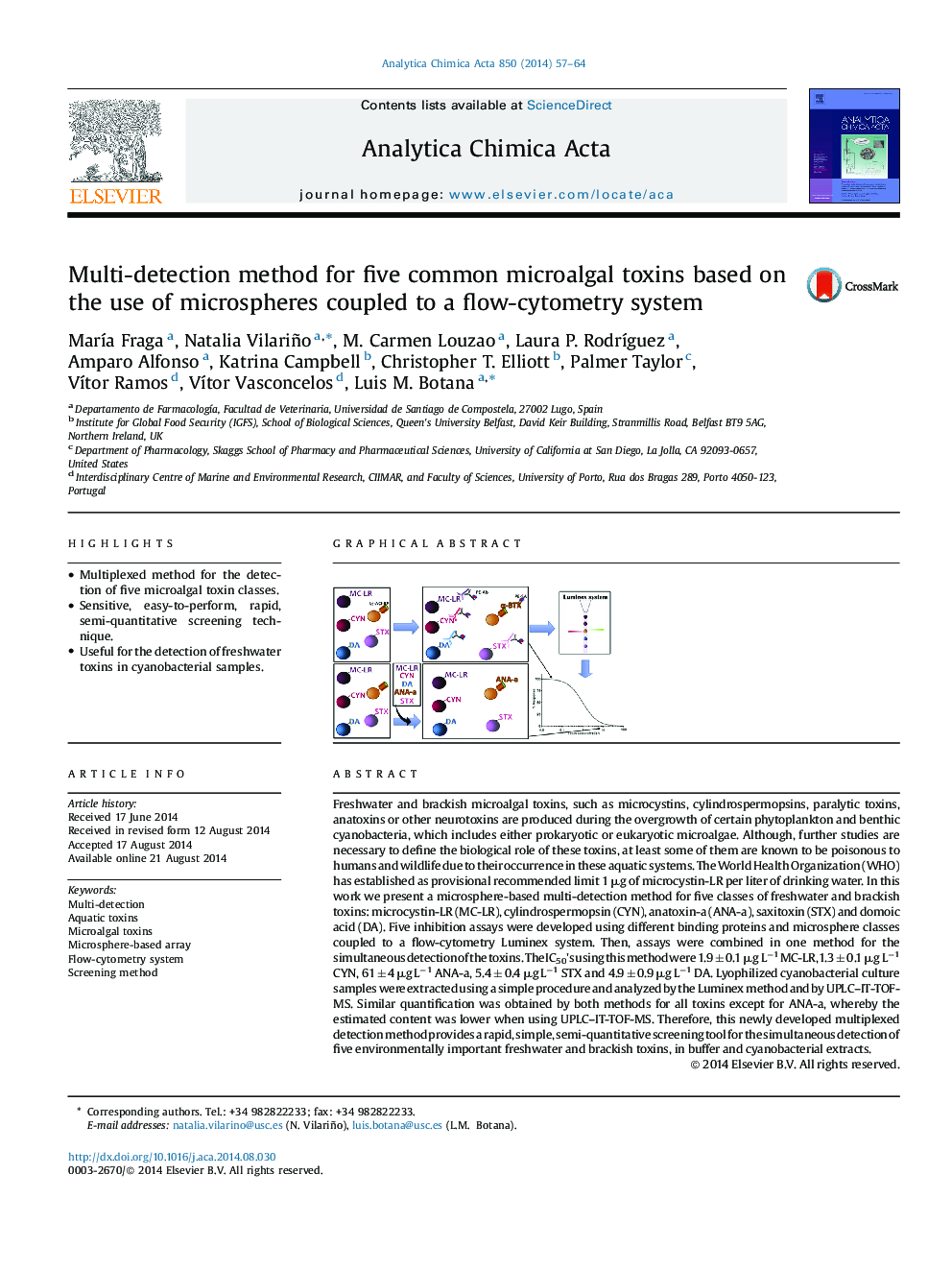| Article ID | Journal | Published Year | Pages | File Type |
|---|---|---|---|---|
| 1163865 | Analytica Chimica Acta | 2014 | 8 Pages |
•Multiplexed method for the detection of five microalgal toxin classes.•Sensitive, easy-to-perform, rapid, semi-quantitative screening technique.•Useful for the detection of freshwater toxins in cyanobacterial samples.
Freshwater and brackish microalgal toxins, such as microcystins, cylindrospermopsins, paralytic toxins, anatoxins or other neurotoxins are produced during the overgrowth of certain phytoplankton and benthic cyanobacteria, which includes either prokaryotic or eukaryotic microalgae. Although, further studies are necessary to define the biological role of these toxins, at least some of them are known to be poisonous to humans and wildlife due to their occurrence in these aquatic systems. The World Health Organization (WHO) has established as provisional recommended limit 1 μg of microcystin-LR per liter of drinking water. In this work we present a microsphere-based multi-detection method for five classes of freshwater and brackish toxins: microcystin-LR (MC-LR), cylindrospermopsin (CYN), anatoxin-a (ANA-a), saxitoxin (STX) and domoic acid (DA). Five inhibition assays were developed using different binding proteins and microsphere classes coupled to a flow-cytometry Luminex system. Then, assays were combined in one method for the simultaneous detection of the toxins. The IC50's using this method were 1.9 ± 0.1 μg L−1 MC-LR, 1.3 ± 0.1 μg L−1 CYN, 61 ± 4 μg L−1 ANA-a, 5.4 ± 0.4 μg L−1 STX and 4.9 ± 0.9 μg L−1 DA. Lyophilized cyanobacterial culture samples were extracted using a simple procedure and analyzed by the Luminex method and by UPLC–IT-TOF-MS. Similar quantification was obtained by both methods for all toxins except for ANA-a, whereby the estimated content was lower when using UPLC–IT-TOF-MS. Therefore, this newly developed multiplexed detection method provides a rapid, simple, semi-quantitative screening tool for the simultaneous detection of five environmentally important freshwater and brackish toxins, in buffer and cyanobacterial extracts.
Graphical abstractFigure optionsDownload full-size imageDownload as PowerPoint slide
